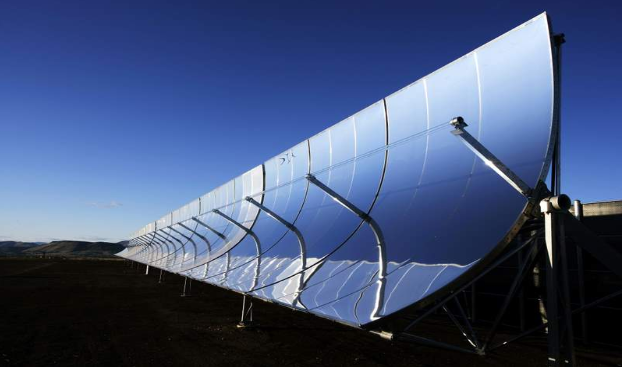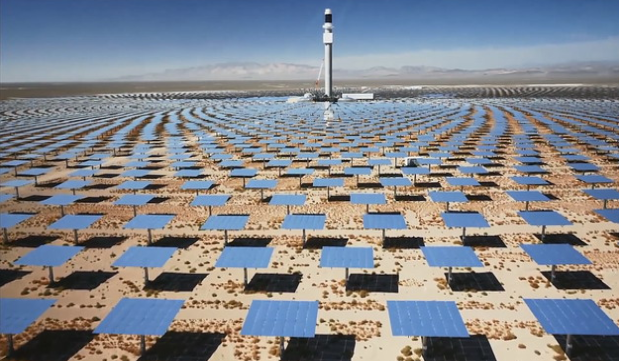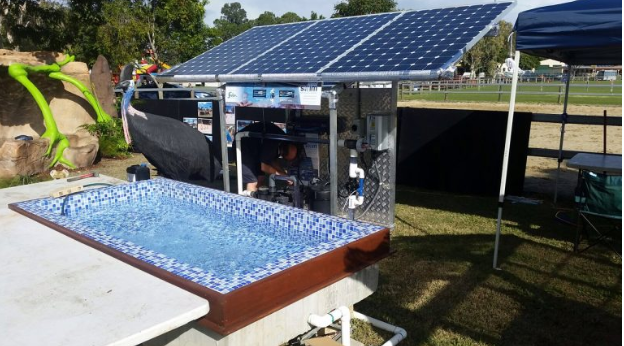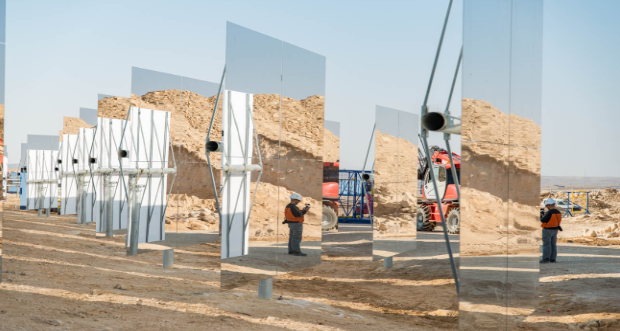Solar thermal heating is the use of solar energy as a heat source. It is different from the process in which solar cells produce electricity directly from the sun rays. It is the oldest method of using solar energy. The solar panel usually heats water, which the consumers use for different purposes. The energy source is free from harmful carbon dioxide emissions.

Sources: helioscsp
The principle behind it is that the heat radiation passes through the pipe and transfer heat to the source. The process starts with the collector such as solar panels absorbing the warmth of the sunlight and heating the fluid. A pump then pushes the heated fluid through pipes to a heat exchanger.
The storage tank receives this heat, which it dispenses for different tasks. If the heat exchange is not efficient, then an automated system uses electricity to warm up the liquid to the desired temperature.
The Benefits of Solar Heating
The heating of fluids through this method is more efficient and beneficial than conventional methods. The heating source is limitless as it depends upon the sun as a fuel source. It means that the source is practically free. Furthermore, the system uses sixty percent less energy for heating.
It reduces the consumption of fossil fuels such as oil, coal, and gas. It effectively reduces greenhouse gas emissions into the atmosphere. The system has the potential to work with the already existing system. Thus, no new upgrades are necessary for the present operation.
The scientists have been developing the technology for decades so that it can work as efficiently even in winters.
The Applications of the Solar Thermal Energy:
Generating Electricity:
The solar thermal power plant makes electricity by using the heat directly from the sun. The workers place hundreds of mirrors around a heating tower. The mirror rotates around to capture the sun at the perfect angle. The mirror redirects the rays of the sun to a particular spot on top of the water tower.

Source: alternative-energies
The heat from the sunlight takes little time to boil the water and turn it to steam. The boiler connects to the turbine through pipes and valves. The generator produces electricity. The water passes through a condenser and returns via pumps back to the water tower.
The electricity which the plants produce is clean and environmentally safe.
Domestic Use:
The solar thermal energy can provide hot water for homes. It offers not only a heating solution for the water but also the heating and cooling system of the house. It amounts to a considerable saving for the consumers. The energy is enough to run the system on its own without any additional support from other sources.
The occupants of the house can use the water for different purposes. You can wash dishes, clothes, mop floors or use them for cleaning the house. The hot water is also suitable for washing clothes as well as taking a bath in cold weather.
The solar cooker uses heat directly from the sun to cook meals. The apparatus can cook, dry, and even pasteurize milk. It is especially useful in places where other types of fuel are expensive and scarce. Moreover, it reduces the production of smoke during cooking, which means that meals are healthy.

Source: freechristiansoftware
Industrial Use:
The industrial sector utilizes solar thermal heat for a lot of processes. It uses the temperature in the paper industry to make rolls of paper and to clean it. The metal industry utilizes solar thermal energy to melt and reshape different alloys.
Solar thermal energy has a high capacity to dry fruits, fish, and vegetables for preservation. You can use it to dry wood which we use as fuel as well as for the construction of buildings and furniture.
It can also help in drying the leftover bio-waste such as vegetables and dry wood chips to produce compost for the plants. The natural fertilizer heats up and decomposes, while the moisture escapes resulting in black grains of manure.
The heat is cheap; thus, it reduces the cost of production, which allows the seller to earn more profit. Moreover, they can reduce the price of their product, which will please the clients as well.

Source: solarpaces
Solar Evaporation:
Solar thermal heat is directly responsible for the drying of the fluid from the evaporation ponds. The water evaporates leaving salt behind. It is the oldest method of obtaining minerals from seawater. Nowadays, leach mining uses a brine solution to collect minerals by removing water from the waste.
The sunlight also helps in distilling water. The thermal energy from the sun heats the water and turns it into steam. The water vapors the flow through pipes and goes to a condenser. The water then turns back into water which collects in a tank.
The process uses less energy than electricity operating machines. However, you need valves to regulate the flow rate of the steam to allow for an optimal transition. Reliable 3 way ball valve manufacturers can help you find the best valves for your application.
The waste management plant uses solar energy to clean the waste by drying off the sewage water and collecting the solid material. The leftover than goes through different processes that produce byproducts that contain manure, among other things.

Source: naue
Solar Green Houses:
Greenhouses use solar heat to warm up the structure and provide light for the plants to grow. It can allow plants to grow even winters or offseason. The environment is under constant control to produce optimal results.
Conclusion:
Solar thermal energy is the oldest and cleanest form of energy. Although we have been using it for many decades, still its use is not extensive, if we compare it to fossil fuels. The first step is to refine the process further to make it more efficient. However, we need to develop more and more technology which uses solar thermal energy. This way, we can decrease our reliance on fossil fuels.






